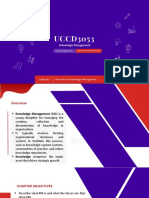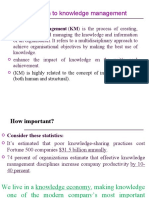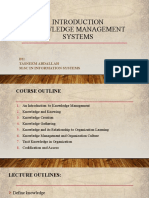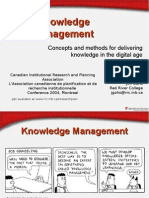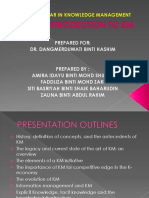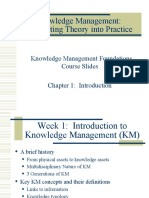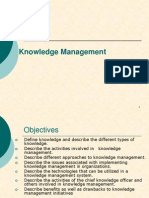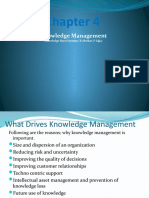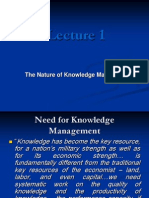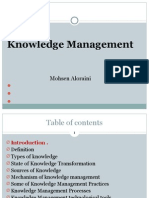Lesson 1 Introduction to Knowledge Management
- Knowledge Management: the tools, techniques, and strategies to retain, analyze, organize,
improve, and share business expertise.
Knowledge resides in the users of information
- Data -> is raw and without context.
- Information -> is data that have been given meaning by way of context.
- Knowledge-> is information combined with understanding and capability; it lives in the minds
of people.
- Types of knowledge:-
1. Tacit knowledge: (silently understood) personal knowledge embedded in individual
experience and involving intangible factors.
2. Explicit knowledge: tacit knowledge that has been documented.
- Ways to retrieve explicit knowledge:-
o User Interface: creates the way a user interacts with a computer.
o Index Fields: (metadata) the index fields in a record hold the unique data that
identifies that record from all the other records in the file or database.
o Taxonomy: The rules and principles used to ensure consistent classification of data
into ordered categories.
- Tools cant manage knowledge, but they can facilitate and support humans in finding,
accessing, generating, transferring and archiving both old and new knowledge.
- Tools used to-> knowledge generation, knowledge storage, knowledge use, and knowledge
transfer.
- Knowledgebase: Digital database of explicit corporate intellectual assets.
- Common knowledge structures:-
o Document structure: forms, templates, reports, graphs, charts, interfaces
o Images: pictures and graphic files
o Video: presentations and video files
o Sounds and Signals
o Text: flat or hypertext
o Data: relational data
o Cases: Case studies, best practices, lessons learned
o Processes: decomposable hierarchies, resources, performance characteristics
o Models: frameworks and simulations
- Creating knowledge sharing culture:-
o Mobilising enabling contexts
o Embed KM technologies
o Storytelling and other practices
o Change management and resistance
o Implementing KM
- Creating and sustaining organizational culture:-
o Cultural symbols
o Company rituals and ceremony
o Company heroes
o Stories
o Language
o Leadership
o Organizational policies and decision making
�- Resistance to change:-
o Different perspectives and goals
o Cultures that value tradition
o Self-interest
o Lack of trust and understanding
o Uncertainty
- Mobilizing knowledge-> Reach Engage Change Amplify
- Why study KM? UAE is moving towards a knowledge economy
- Knowledge economy: Knowledge has become the key asset to drive organisational (national)
survival and success.
knowledge worker: works with their head, and produces ideas, knowledge, and
information.
- Knowledge economy four major pillars
• Education & Training
• Information Infrastructure
• Economic Incentive & Institutional Regime
• Innovation Systems



